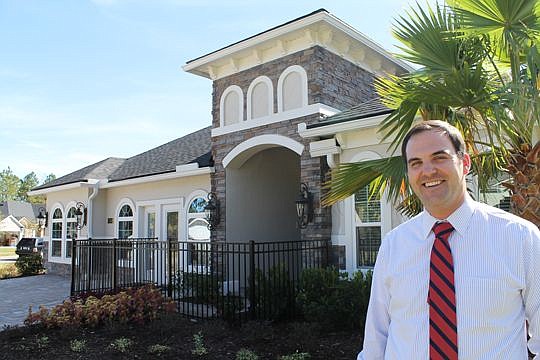
In 2009, Dream Finders Homes’ co-founder Patrick Zalupski learned competitors were telling customers his startup likely would not be around another year.
They said it again in 2010 and again in 2011.
Today the company whose motto is “a better quality home at a better price” is still in business and growing, on track to build 420 homes this year.
According to industry analyst Metrostudy, Dream Finders was the second largest homebuilder in the Northeast Florida market for the year ending July, led only by residential giant D.R. Horton.
Dream Finders is now building in Savannah, Ga., and deals are in place for the company to expand next year into Denver, Orlando and Austin, Texas.
The builder that went toe-to-toe with the nationals found its opportunity during one of the unlikeliest times in homebuilding’s history — the Great Recession.
In 2008, not many builders were bullish on home construction.
Zalupski was.
“The main thing in real estate and homebuilding is land,” said Zalupski. “And from 2004 to 2007, you could not acquire land unless you could show up and buy 500 lots in bulk for cash.”
Then prices bottomed out. It was a once-in-a-lifetime opportunity.
Zalupski, whose background was in finance, convinced local construction veteran Mark McGuigan to partner with him.
“He thought I was crazy,” Zalupski said.
McGuigan had stopped building homes and was running a trucking company. Even in 2008, he wasn’t confident the market was coming back.
But Zalupski felt there was little risk, because the market was so low.
“The perception people had was that homebuilding was going to go to zero, like there was going to be no new construction starts in the entire market,” Zalupski said. “They could go lower, absolutely. But people are not going to literally stop the building.”
The team started at Pine Ridge Plantation in Middleburg.
“We didn’t do this tremendous analysis on the whole market and decide this was the best community to make our start,” Zalupski said. “We just found a developer who would sell finished lots on an as-needed basis, so it was very low risk.”
The strategy was to target first-time homebuyers. Move-up buyers were underwater and stuck in their existing homes.
“There’s a lot of velocity at the low end,” Zalupski said. “We’re truly an equal opportunity builder, though. We like the high end, too, if we can mitigate the risk properly.”
It was at Pine Ridge Plantation that Dream Finders tested its business model of a better home at a better price.
National homebuilders hold the advantage in financing that, coming from shareholders, is more forgiving during a downturn.
Where local builders can compete, though, is by running leaner and being more responsive to consumers.
Overhead costs for large builders typically run 13 percent. In its early years, Dream Finders’ overhead was 2 percent. Today as a larger company, it’s between 7 and 8 percent.
“So right there we can sell our homes for 3 to 5 percent lower than the nationals and still make the same amount of money,” Zalupski said.
And whatever the market was, Dream Finders only needed a small percentage of it to succeed.
It was a good idea at the right time, aided by a downcycle that had thinned competition.
“Because Patrick started at the bottom of the Great Recession, he wasn’t carrying a load of inventory like the rest of us,” said Michael Bourre, president of Bourre Construction Group. Dream Finders was in a growing cycle right out of the gate, while competitors were working on assets they had acquired at a higher price.
“He was able to come in fresh and tailor his business plan to meet the needs of the marketplace,” Bourre said.
As Dream Finders lowered costs and risks at one end of the business, it offered a compelling product at the other. Here, Zalupski was heavily influenced by his mother, a successful Realtor.
“She’d say things like, ‘Why are you putting in this fixture?’ And ‘Oh, my customers hate this.’ ‘Don’t do Corian in the kitchen, do the granite,’” Zalupski said.
He learned buyers don’t look for the cheapest price, and they don’t look for the highest quality. They seek value.
“We’re always striving to find the perfect balance,” Zalupski said.
The company does so through construction choices and strategic trade partnerships.
Dream Finders includes such features as blown-in fiberglass insulation and best-in-class products, like zip wall, zip tape and Advantech subflooring, which is “screwed and glued” in place instead of nailed. It also includes many features not typically standard in new homes, like granite countertops, stainless appliances and 15 SEER air-conditioning units.
Dream Finders’ homes are either the same price as competitors, with more features, said Zalupski, or offer the same features for 5 to 10 percent less.
“If you took a home that we quoted for $400,000, and then you went to builder X, that same home could be $450,000 or $420,000,” he said. “It’s a materially different number.”
(904) 356-2466